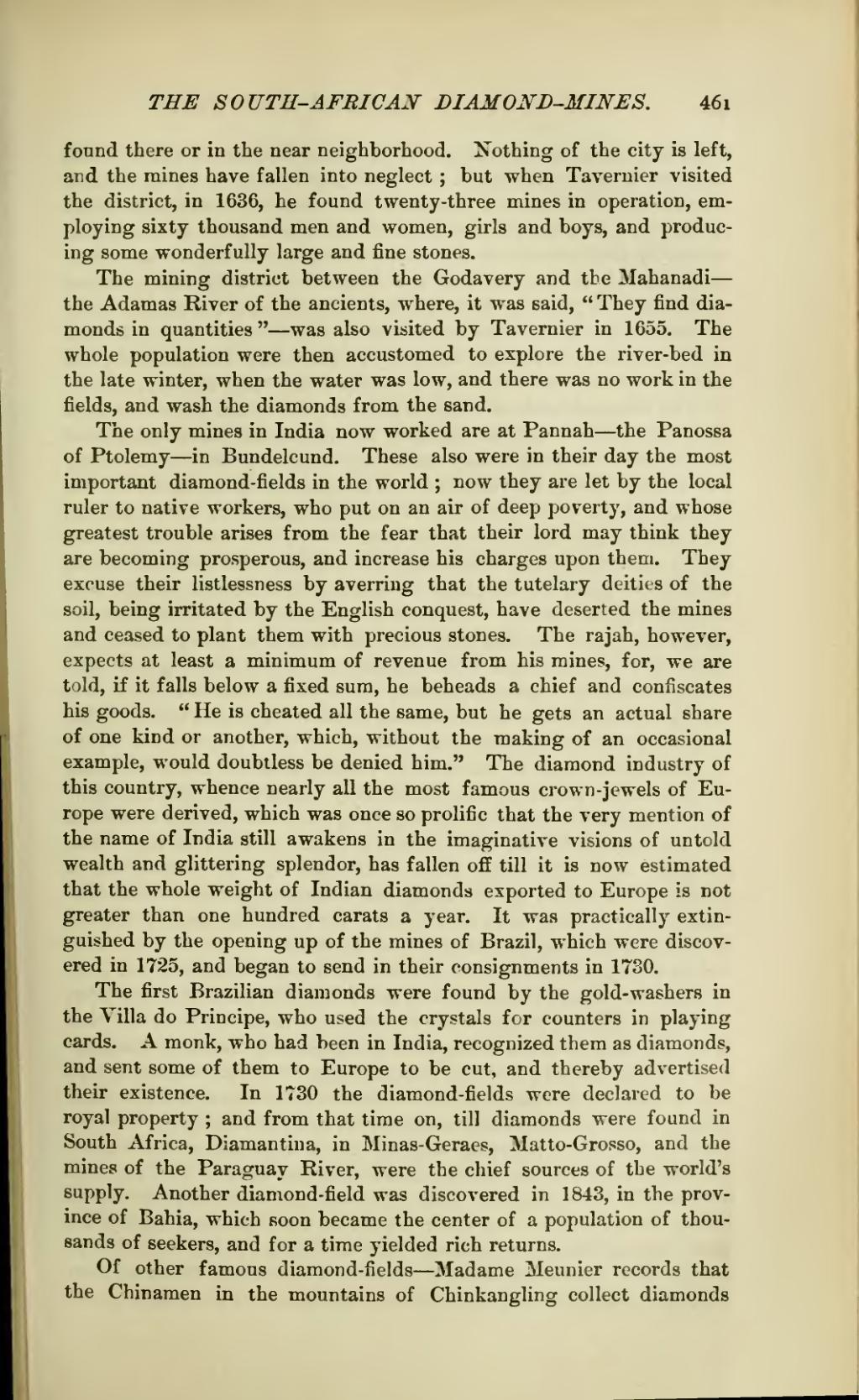found there or in the near neighborhood. Nothing of the city is left, ar-d the mines have fallen into neglect; but when Tavernier visited the district, in 1636, he found twenty-three mines in operation, employing sixty thousand men and women, girls and boys, and producing some wonderfully large and fine stones.
The mining district between the Godavery and the Mahanadi-the Adamas River of the ancients, where, it was said, "They find diamonds in quantities"—was also visited by Tavernier in 1655. The whole population were then accustomed to explore the river-bed in the late winter, when the water was low, and there was no work in the fields, and wash the diamonds from the sand.
The only mines in India now worked are at Pannah—the Panossa of Ptolemy—in Bundelcund. These also were in their day the most important diamond-fields in the world; now they are let by the local ruler to native workers, who put on an air of deep poverty, and whose greatest trouble arises from the fear that their lord may think they are becoming prosperous, and increase his charges upon them. They excuse their listlessness by averring that the tutelary deities of the soil, being irritated by the English conquest, have deserted the mines and ceased to plant them with precious stones. The rajah, however, expects at least a minimum of revenue from his mines, for, we are told, if it falls below a fixed sum, he beheads a chief and confiscates his goods. "He is cheated all the same, but he gets an actual share of one kind or another, which, without the making of an occasional example, would doubtless be denied him." The diamond industry of this country, whence nearly all the most famous crown-jewels of Europe were derived, which was once so prolific that the very mention of the name of India still awakens in the imaginative visions of untold wealth and glittering splendor, has fallen off till it is now estimated that the whole weight of Indian diamonds exported to Europe is not greater than one hundred carats a year. It was practically extinguished by the opening up of the mines of Brazil, which were discovered in 1725, and began to send in their consignments in 1730.
The first Brazilian diamonds were found by the gold-washers in the Villa do Principe, who used the crystals for counters in playing cards. A monk, who had been in India, recognized them as diamonds, and sent some of them to Europe to be cut, and thereby advertised their existence. In 1730 the diamond-fields were declared to be royal property; and from that time on, till diamonds were found in South Africa, Diamantina, in Minas-Geraes, Matto-Grosso, and the mines of the Paraguay River, were the chief sources of the world's supply. Another diamond-field was discovered in 1843, in the province of Bahia, which soon became the center of a population of thousands of seekers, and for a time yielded rich returns.
Of other famous diamond-fields—Madame Meunier records that the Chinamen in the mountains of Chinkangling collect diamonds
